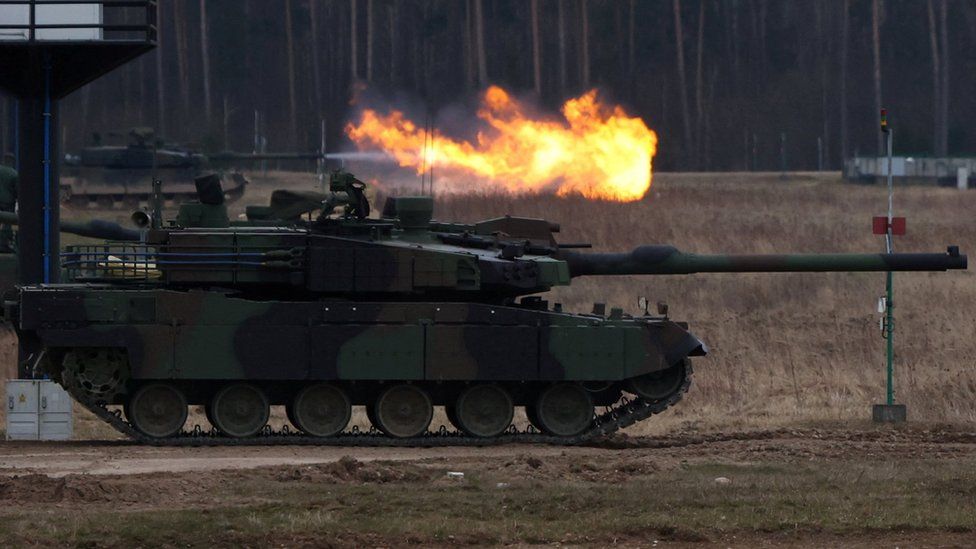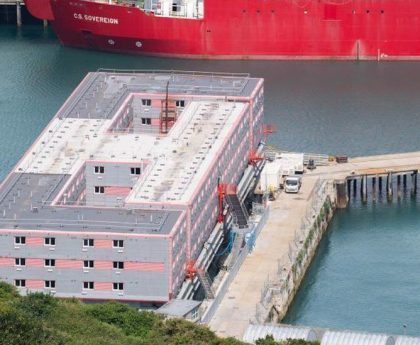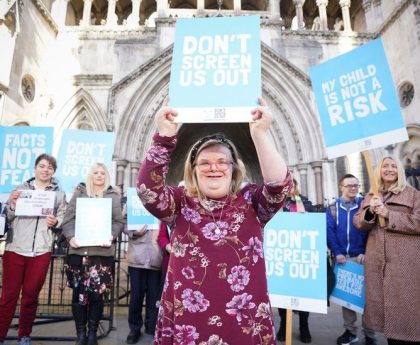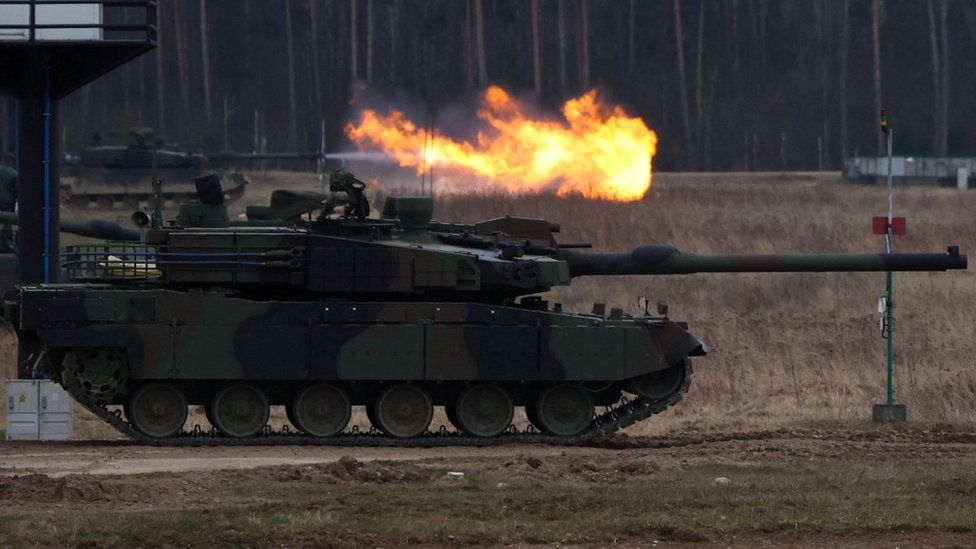 Image source, Reuters
Image source, ReutersIn the cool, spring sunshine of a Polish military base, a noisy and smoky tank performs a 90-degree turn, the metal of its caterpillar tracks scraping along the concrete.
Creatures of war had become backdrops for the politics of defence.
A dangerous world is colliding with a general election year.
In the years after the Cold War, many western countries reaped a peace dividend.
A safer world, the logic went, meant money previously spent on soldiers, war planes and aircraft carriers could instead be spent on the health service or schools.
Or taxes could be cut.
But how things have changed.
There is conflict in the Middle East. And war in Europe.
Rishi Sunak travelled here to meet his Polish opposite number Donald Tusk, and the secretary general of the defence alliance Nato, Jens Stoltenberg.
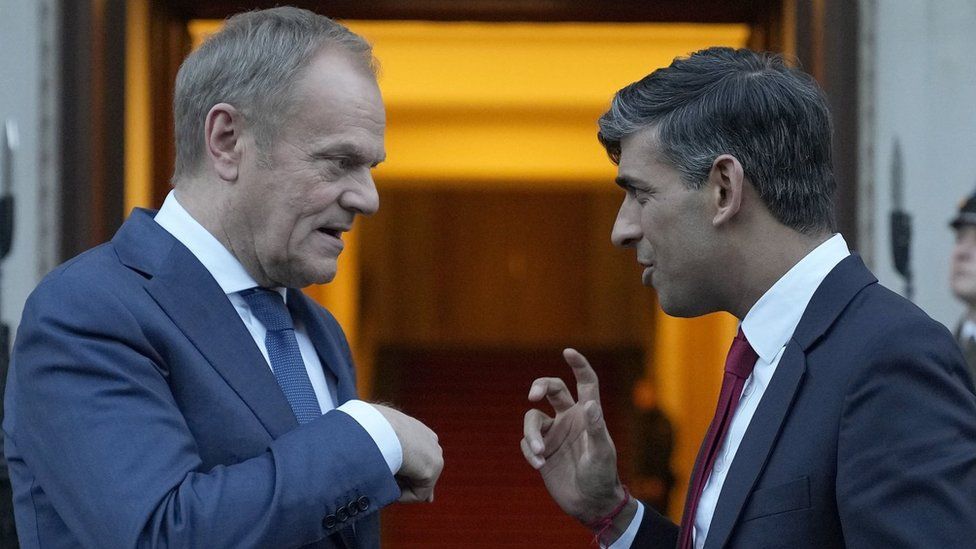 Image source, PA Media
Image source, PA MediaBut the prime minister came here with an announcement in his pocket too.
One alive to the threats the UK faces internationally, and the domestic threats he faces politically.
And if you're talking about a spending commitment, who better to have in tow than the Chancellor Jeremy Hunt, as well as the Defence Secretary Grant Shapps?
Mr Sunak said he wanted to increase defence spending to 2.5% of national income by 2030.
The government estimates this would amount to an extra £75bn in extra defence spending between now and the end of the decade.
The prime minister is wrapping the plan in grand rhetoric, and yes, if delivered, it would amount to a significant cranking up in spending devoted to defence.
And, he claims, it is "fully funded with no increase in borrowing or debt".
Ben Zaranko of the Institute for Fiscal Studies notes that "this is a big spending commitment," adding "there is no sign that overall spending plans have been topped up.
"So it's implicitly coming from other areas. Unprotected public services now face cuts of around 4% per annum after 2025".
Enter next, Labour. A central plank of Sir Keir Starmer's attempt to reinvent his party has been to cloak himself in the union flag (or indeed the St George's flag for St George's Day) and emphasise his commitment to the armed forces.
He has been pictured in combat fatigues.
He emphasised Labour's commitment to Nato.
Quite the contrast with Jeremy Corbyn.
'Political arms race'
But on funding, his promise is not as concrete as the Conservative one.
Labour has promised to increase defence spending to 2.5% of national income when "resources allow".
How will they respond now, having been outflanked by the Conservatives?
In the hours immediately after the prime minister's speech, shadow cabinet ministers appeared unsure.
But the fact that Westminster's two biggest parties are in a political arms race on defence tells you rather a lot of what you need to know about the state of the world.
"It has costs to have Russia as a neighbour.
"There is no way we can run away from that cost. You have to pay. We have to understand that the most expensive alternative is to allow Putin to win in Ukraine because then we will live in a much more dangerous world," the Nato Secretary General told me.
Yes, the leader of a defence alliance is always likely to want more money for their cause.
But it is a sobering observation.

